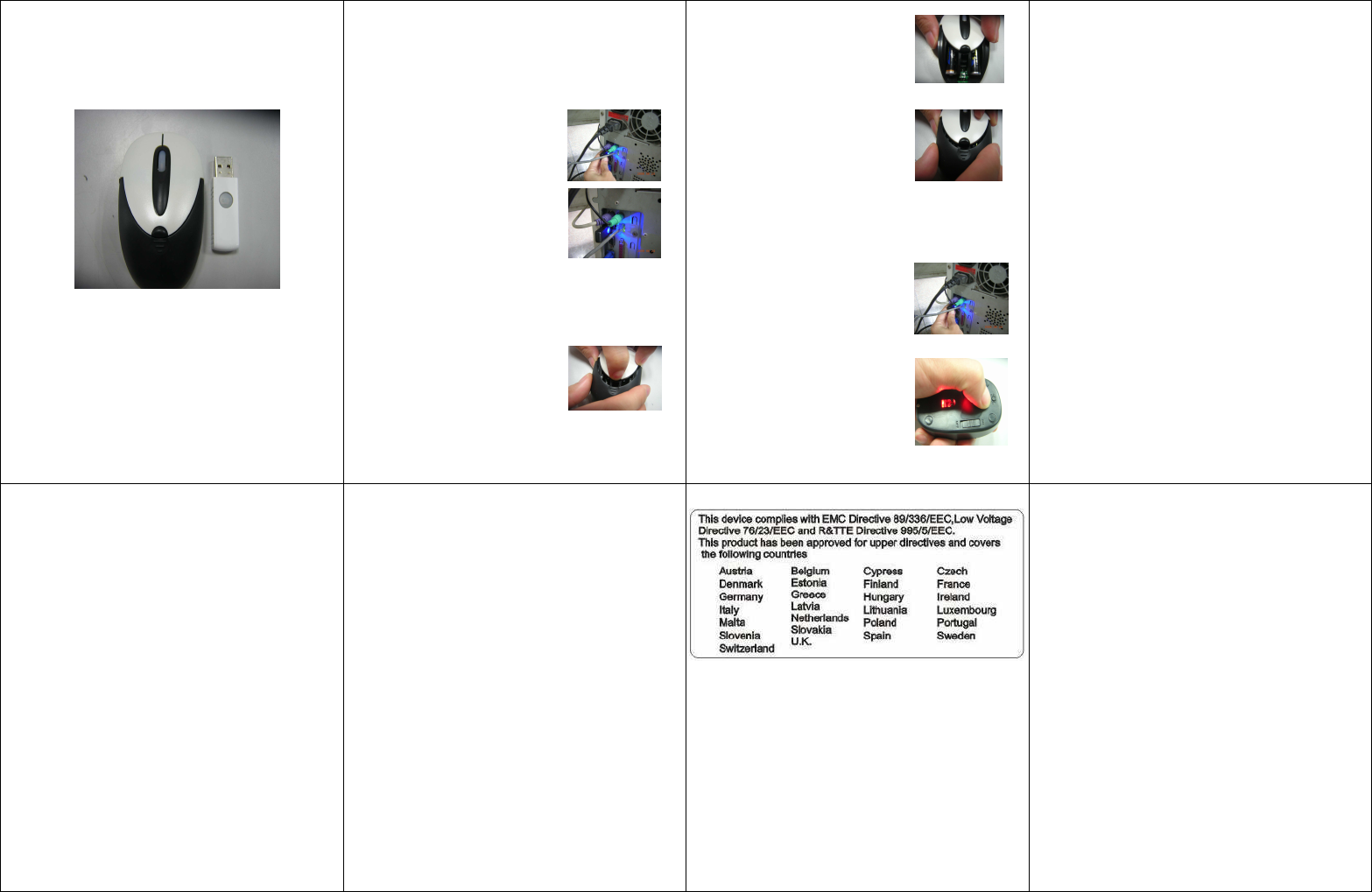Sysgration AXM-700A Sysgration, Easy Line User Manual AXM 700A Manual
Sysgration Ltd. Sysgration, Easy Line AXM 700A Manual
Users Manual

Wireless Optical Mouse AXM-700A User Manual
AXM-700A User Manual
1. Connecting with Computer:
This Wireless Optical mouse supports you
Plug and Play function.
Plug the receiver into USB port of the PC.
Under Win2000 or higher ,
OS will detect the RF device
automatically.
Under Win98 or lower,
please insert Win98 CD or
download Win98 driver from
Microsoft web-site and
install the driver first.
Insert the batteries into the mouse and
move it for a while, then it starts working .
2. Inserting Batteries:
A. Find a button at the
middle top of the mouse
and press with your left
finger.
B. Drag the battery cover backwards with
your right thumb and finger and open it.
C. Insert 2 AAA
batteries into the
compartment with correct
orientation.
D. Slide the battery
cover to the front of the
compartment till it is
locked.
3. Change Connection:
When your environment happens to be
severely interfered by neighboring
wireless devices, you may
change connection channel.
A. Press the Connect button
on the receiver dongle and
the led on it starts blinking
B. Press the Connect
button on the bottom of the
mouse. When the Led
blinking turns faster,
the new connection is OK.
Note: Pressing of the two Connect buttons
should be within 10 seconds to get
connection successful.
4. Power Saving:
A. For battery saving purpose, when the
mouse is kept stationary for 8 minutes, it
will automatically enter Sleeping Mode.
B. Click any of the buttons once and the
mouse will wakeup immediately.
5 Power Off and Power Off mode:
A. When there is occasion that you will
not use the mouse for a period of time, be
sure to slide the power switch to the OFF
position.
B. Or if you press the connect button on
the bottom of the mouse for 3 seconds, the
optical Led will flash once and the mouse
will get into power off mode.
B. To resume mouse’s power, press the
channel button once again.
6. Trouble shooting:
A. When mouse doesn’t respond to any
movement, check the battery power status. It
would not work when voltage of each
battery is lower than 1.0Vdc.
B. Check the battery pole for incorrect
orientation, if the optical Led is still
unlighted after inserting batteries.
C. When failure of channel connection is
suspected, try procedure of change channel
as mention above.
D. Ask for maintenance solution from
your retailer and engineer when upper
troubleshooting methods fail. Personally
taking apart of this unit is prohibited.
FCC Note :
This equipment has been tested and comply with the limits for a
class B digital device, pursuant to Part 15 of the FCC Rules. These
limits are designed to provide reasonable protection. This equipment
generates, uses and can radiated radio frequency energy and, if not
installed and used in accordance with the instructions, may cause
harmful interference to radio communications. However, there is no
guarantee that interference will not occur in a particular installation if
this equipment does cause harmful interference to radio or television
reception, which can be determined by turning the equipment off and
on, the user is encouraged to try to correct the interference by one or
more of the following measures:
-Reorient or relocate the receiving antenna.
-Increase the separation between the equipment and receiver.
-Connect the equipment into an outlet on a circuit different from
that to which the receiver is connected.
-Consult the dealer or an experienced radio/TV technician for
help.
Changes or modifications not expressly approved by the party
responsible for compliance could void the user’s authority to operate
the equipment.
The antenna(s) used for this transmitter must not be co-located or
operating in conjunction with any other antenna or transmitter
This device complies with part 15 of the
FCC Rules. Operation is subject to the following
two conditions: (1) This device may
not cause harmful interference, and (2) this
device must accept any interference received,
including interference that may
cause undesired operation.